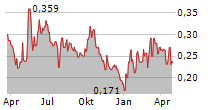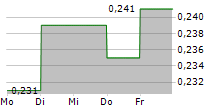Gigasun's wholly-owned subsidiary in China has signed an agreement with a Chinese metalworking company for the installation of a solar power plant with a total capacity of approximately 5.9 megawatts (MW). The plant is expected to generate annual revenues of approximately SEK 3.2 million from the sale of electricity, which corresponds to a total order value of approximately SEK 64 million over the 20-year term of the agreement.
The investment in the plant amounts to approximately SEK 24.5 million and the project is planned to start in the third quarter of 2025. The plant will be owned and operated by Gigasun's subsidiaries and is expected to reduce carbon dioxide emissions by approximately 2,900 tonnes per year. The project is fully commercially viable without the need for government subsidies. The photovoltaic plant will be built in HuBei province.
CEO Max Metelius comments:
"We continue to secure profitable projects in one of the world's most dynamic energy markets. The Chinese transition to fossil-free electricity production continues at a high pace, and we are proud to contribute to this development with competitive and sustainable solutions."
For more information, please contact:
Max Metelius, CEO Gigasun AB (publ)
Phone: +46 (0) 72 316 04 44
E-mail: max.metelius@gigasun.se
Stefan Salomonsson, CFO Gigasun AB (publ)
Phone: +46 (0) 70 220 80 00
E-mail: stefan.salomonsson@gigasun.se
Certified Advisor is FNCA Sweden AB
About the operation
Gigasun operates in China through its wholly owned subsidiaries Advanced Soltech Renewable Energy (Hangzhou) Co. Ltd ("ASRE") and Longrui Solar Energy (Suqian) Co. Ltd. ("SQ"), and Suqian Ruiyan New Energy Co., Ltd. ("RY").
The business model consists of financing, installing, owning and managing solar PV installations on customers' roofs in China. The customer does not pay for the solar PV installation, but instead enters an agreement to buy the electricity that the solar PV installation produces under a 20-year agreement. Current income comes from the sale of electricity to customers and governmental subsidies.
The goal is to have an installed capacity of 1,000 megawatts (MW) in the medium term.

